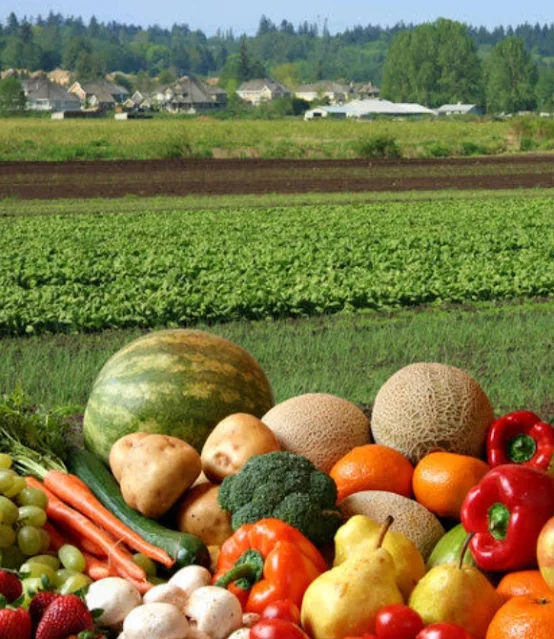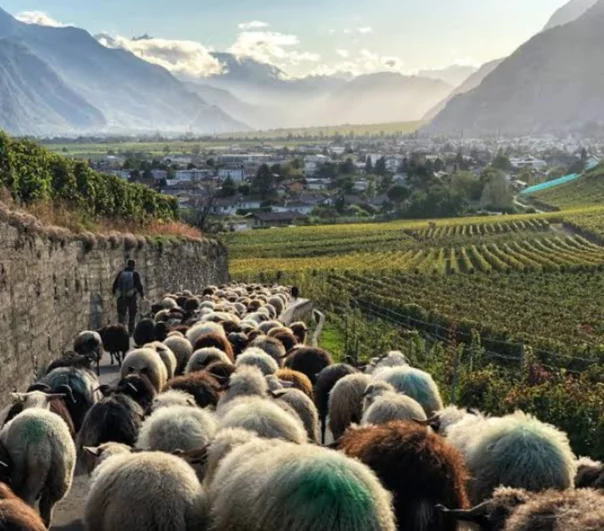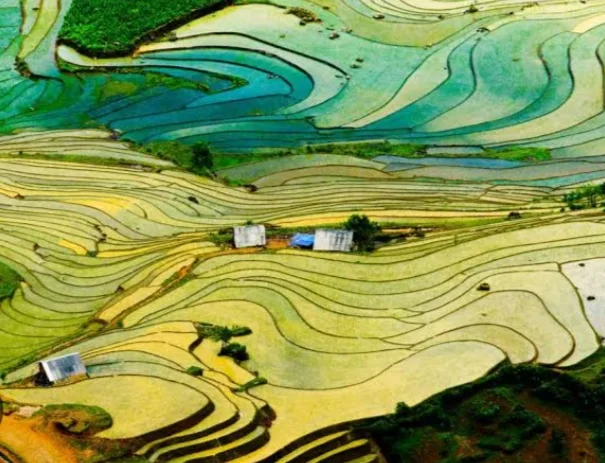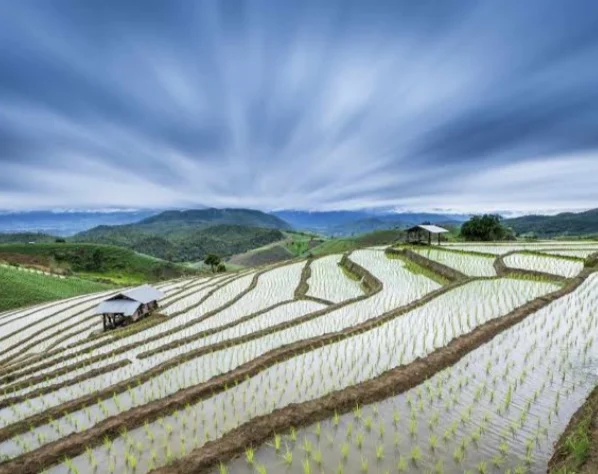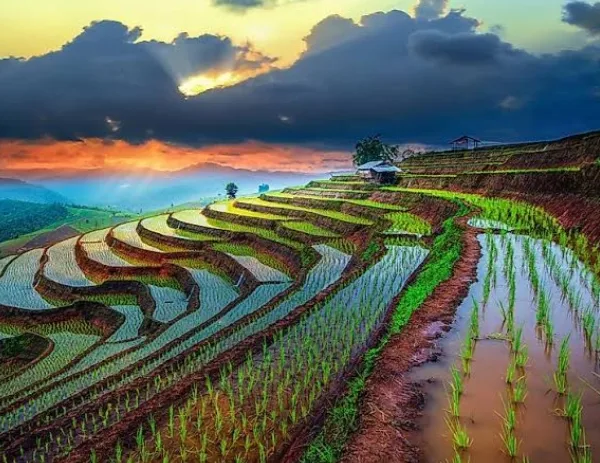A Journey Through Time: The History of Modern Swiss Agriculture
The story of modern Swiss agriculture unfolds like a tapestry woven with tradition, innovation, and adaptation.
Here's a glimpse into its key chapters:
18th Century - Seeds of Change:
- Shifting Gears: While agriculture remained the primary occupation, the rise of cottage industries spurred diversification, laying the foundation for future modernization.
- Embracing Knowledge: Agricultural societies and educational initiatives fostered the adoption of new techniques and crop varieties.
19th Century - Revolution Takes Root:
- Mechanization Arrives: Horse-drawn plows and threshing machines marked the onset of mechanization, gradually transforming labor-intensive practices.
- Dairying Takes Center Stage: Cheese production gained prominence, driven by export opportunities and the development of iconic varieties like Emmental and Gruyère.
20th Century - Modernization & Challenges:
- World Wars & Self-Sufficiency: Wartime pressures led to policies promoting domestic food production, further boosting dairy and livestock farming.
- Green Revolution's Impact: The adoption of fertilizers, pesticides, and high-yielding varieties significantly increased yields, but raised concerns about environmental sustainability.
21st Century - A Balancing Act:
- Focus on Sustainability: Growing environmental awareness shifted priorities towards organic farming, integrated pest management, and renewable energy on farms.
- Precision Agriculture: Technological advancements, like data-driven insights and automation, are optimizing resource use and improving efficiency.
- Challenges Persist: Shrinking farm numbers, competition from global markets, and ensuring rural community vitality remain key challenges.
Key Takeaways:
- Swiss agriculture has continuously adapted, embracing innovation while preserving traditions.
- Sustainability and technological advancements are shaping the future of the sector.
- Balancing economic viability, environmental responsibility, and maintaining vibrant rural communities remains a central struggle.
Switzerland: Where Tradition Meets Innovation in Modern Agriculture
Nestled amidst the majestic Alps, Switzerland boasts a surprisingly dynamic agricultural sector. Though contributing only a small percentage to its GDP, Swiss agriculture paints a fascinating picture of tradition seamlessly blending with cutting-edge technology and sustainability practices. Let's delve into the unique characteristics that define modern agriculture in Switzerland:
Modern Swiss Agriculture: A Table of Key Products
Modern Swiss agriculture is known for its high-quality products, often produced in challenging mountainous terrain. Here's a table summarizing some of the key agricultural products in Switzerland:
| Product | Description | Notable Features |
|---|---|---|
| Dairy Products | Cheese, milk, yogurt | Renowned for high-quality cheese varieties like Gruyère, Emmental, and Appenzeller |
| Meat | Beef, pork, poultry | Produced from pasture-raised animals, often with regional specialties |
| Fruits | Apples, pears, grapes, berries | Grown in diverse climates, with apples and grapes being particularly important |
| Vegetables | Potatoes, onions, carrots, lettuce | Cultivated in various regions, often using innovative farming techniques |
| Grains | Wheat, barley, corn | Primarily grown for livestock feed and human consumption, with a focus on quality and sustainability |
| Wine | White and red wines | Produced in various regions, with a growing reputation for high-quality wines |
Additional Notes:
- Organic Farming: Switzerland has a strong organic farming sector, with many products being certified organic.
- Sustainability: Swiss agriculture places a strong emphasis on sustainability, with practices like precision farming and crop rotation being common.
- Regional Specialities: Many regions in Switzerland have their own unique agricultural products, reflecting local traditions and conditions.
A Landscape of Diverse Specialties:
- Mountain Majesty: Over 60% of Swiss land is unsuitable for arable farming, leaving a distinct mark on its agricultural landscape. This translates to a focus on pastoral farming, with lush mountain meadows serving as grazing grounds for cattle, sheep, and goats. The resulting dairy industry reigns supreme, producing renowned cheeses, milk, and yogurt.
- Beyond the Peaks: In the valleys and plateaus, arable farming thrives. Crops like cereals, maize, and rapeseed contribute significantly, while specialized regions cultivate fruits, vegetables, and vineyards, crafting high-quality wines and specialty products.
Embracing Innovation:
- Precision Power: Swiss farmers actively leverage technology to enhance efficiency and sustainability. From automated milking systems and robotic equipment to data-driven insights and precision agriculture techniques, innovation plays a key role in optimizing operations.
- Sustainable Solutions: Environmental consciousness is deeply ingrained in Swiss agriculture. Practices like crop rotation, integrated pest management, and organic farming are widely adopted, while renewable energy sources are increasingly powering farms.
Challenges and Opportunities:
- Consolidation and Competition: Like many developed nations, Switzerland faces a shrinking number of farms and increasing consolidation. This trend poses challenges for maintaining rural communities and ensuring diversity in the sector.
- Balancing Tradition and Progress: Striking a balance between preserving traditional practices and embracing innovation is crucial for maintaining the unique character of Swiss agriculture while ensuring its long-term viability.
A Global Inspiration:
Despite its unique challenges, Switzerland's commitment to sustainable, technology-driven, and high-quality agriculture serves as an inspiration for many. Its model showcases how tradition and innovation can coexist, paving the way for a future where agriculture thrives in harmony with both the environment and local communities.
Statistical Snapshot of Swiss Modern Agriculture
Here's some key data to paint a more detailed picture of Swiss modern agriculture:
Land Use:
- Total agricultural land: 36% of Switzerland's total area (6.7 million hectares)
- Arable land: 10.4%
- Permanent meadows and pastures: 23.8%
- Mountain meadows: 1.8%
Production:
- Milk: Largest agricultural product, with 3.2 million tons produced in 2020
- Cheese: Over 450 varieties produced, with exports exceeding 200,000 tons in 2020
- Meat: Mainly pork, poultry, and beef, with a total production of 615,000 tons in 2020
- Fruits and vegetables: Varied production depending on region, with apples, grapes, potatoes, and carrots being significant contributors
- Wine: Production concentrated in Valais, Vaud, and Geneva, with exports exceeding 1 million liters in 2020
Farm Numbers and Size:
- Number of farms: Decreasing, reaching 52,247 in 2020 (compared to 62,531 in 2010)
- Average farm size: Increasing, reaching 17.6 hectares in 2020 (compared to 15.4 hectares in 2010)
Sustainability:
- Organic farming: 15.6% of agricultural land managed organically in 2020 (highest percentage in Europe)
- Renewable energy: Growing use of solar power and biogas on farms
Economic Contribution:
- Share of GDP: 0.7% in 2019
- Employment: 2.8% of Swiss workforce directly employed in agriculture in 2020
Swiss Modern Agriculture Statistics: A Table
| Category | Statistic | Value (Year) | Source |
|---|---|---|---|
| Land Use | Total agricultural land | 36% | Swiss Federal Office for Agriculture (2020) |
| Arable land | 10.4% | Swiss Federal Office for Agriculture (2020) | |
| Permanent meadows and pastures | 23.8% | Swiss Federal Office for Agriculture (2020) | |
| Mountain meadows | 1.8% | Swiss Federal Office for Agriculture (2020) | |
| Production | Milk production | 3.2 million tons (2020) | Swiss Farmers' Association (2020) |
| Cheese exports | 200,000+ tons (2020) | Swiss Farmers' Association (2020) | |
| Total meat production | 615,000 tons (2020) | Swiss Farmers' Association (2020) | |
| Wine exports | 1 million+ liters (2020) | Swiss Farmers' Association (2020) | |
| Farm Numbers & Size | Number of farms | 52,247 (2020) | Swiss Federal Office for Agriculture (2020) |
| Average farm size | 17.6 hectares (2020) | Swiss Federal Office for Agriculture (2020) | |
| Sustainability | Organic farmland | 15.6% (2020) | Swiss Federal Office for Agriculture (2020) |
| Economic Contribution | Share of GDP | 0.7% (2019) | Swiss Federal Office for Agriculture (2020) |
| Agricultural employment | 2.8% (2020) | Swiss Federal Office for Agriculture (2020) |
Note: This table represents a selection of key statistics. More detailed data may be available from the sources listed.
Sources:
- Swiss Federal Office for Agriculture: https://www.blw.admin.ch/
- Swiss Farmers' Association: https://www.sbv-usp.ch/
- Historical Statistics of Switzerland: https://hsso.ch/
Additional Notes:
- These are just a few key statistics, and many other metrics can delve deeper into specific aspects of Swiss agriculture.
- Data may vary slightly depending on the source and year referenced.
Modern Agriculture Products in Switzerland: Innovation beyond Tradition
Switzerland's agricultural sector, while deeply rooted in tradition, embraces innovation to cultivate a diverse range of high-quality, sustainable products. Here are some prominent examples:
Cheese: Boasting the highest percentage of organic farmland in Europe, Switzerland excels in organic cheese production. Renowned varieties like:
- Gruyère: A hard, nutty cheese with a long history, exported worldwide.
- Emmental: Characterized by its distinctive holes and buttery taste.
- Appenzeller: A spicy cheese seasoned with herbs and brine, available in various strengths.
- Vacherin: A creamy, washed-rind cheese with a distinctive aroma.
Wine: Diverse regions offer unique grape varietals and styles:
- Chasselas: A light, dry white wine popular in western Switzerland.
- Pinot Noir: A versatile red grape producing elegant wines in regions like Valais and Geneva.
- Gamay: A lighter-bodied red grape producing fruity wines, mainly concentrated in Vaud.
Fruits & Vegetables: Grown both conventionally and organically, with notable examples:
- Apples: Leading variety is Golden Delicious, followed by Gala and Granny Smith.
- Pears: Williams pears are the most popular, often used in spirits and desserts.
- Plums: Mirabelle plums are a specialty, used in jams and tarts.
- Cherries: A symbol of spring, with several renowned varieties like Burlat and Rainier.
- Potatoes: Several popular varieties, including the starchy Charlotte and the floury Désirée.
- Carrots: Nantes and Flakkee are widely grown varieties.
- Tomatoes: Greenhouse-grown tomatoes dominate, with various cultivars like Marmande and Coeur de Boeuf.
Emerging Products: Sustainable and innovative options are gaining traction:
- Plant-based proteins: Planted leads the charge with pea-based meat alternatives like pulled "pork" and "chicken" schnitzel.
- Insect protein: Entovector and Essento explore using insects like black soldier flies for animal feed and potentially human consumption.
- Microalgae: Alver cultivates Golden Chlorella, a microalga praised for its protein and nutritional content.
Data Highlights:
- Cheese exports exceed 200,000 tons annually, showcasing the industry's global reach.
- Wine exports surpass 1 million liters, highlighting the growing international appreciation.
- Over 15% of agricultural land is managed organically, reflecting the commitment to sustainability.
These are just a glimpse into the diverse and evolving landscape of modern agriculture products in Switzerland. The sector demonstrates how tradition and innovation can coexist, paving the way for a future of sustainable, high-quality food production.
Switzerland's agricultural sector, while deeply rooted in tradition, embraces innovation to cultivate a diverse range of high-quality, sustainable products. Here are some prominent examples:
Cheese: Boasting the highest percentage of organic farmland in Europe, Switzerland excels in organic cheese production. Renowned varieties like:
- Gruyère: A hard, nutty cheese with a long history, exported worldwide.
- Emmental: Characterized by its distinctive holes and buttery taste.
- Appenzeller: A spicy cheese seasoned with herbs and brine, available in various strengths.
- Vacherin: A creamy, washed-rind cheese with a distinctive aroma.
Wine: Diverse regions offer unique grape varietals and styles:
- Chasselas: A light, dry white wine popular in western Switzerland.
- Pinot Noir: A versatile red grape producing elegant wines in regions like Valais and Geneva.
- Gamay: A lighter-bodied red grape producing fruity wines, mainly concentrated in Vaud.
Fruits & Vegetables: Grown both conventionally and organically, with notable examples:
- Apples: Leading variety is Golden Delicious, followed by Gala and Granny Smith.
- Pears: Williams pears are the most popular, often used in spirits and desserts.
- Plums: Mirabelle plums are a specialty, used in jams and tarts.
- Cherries: A symbol of spring, with several renowned varieties like Burlat and Rainier.
- Potatoes: Several popular varieties, including the starchy Charlotte and the floury Désirée.
- Carrots: Nantes and Flakkee are widely grown varieties.
- Tomatoes: Greenhouse-grown tomatoes dominate, with various cultivars like Marmande and Coeur de Boeuf.
Emerging Products: Sustainable and innovative options are gaining traction:
- Plant-based proteins: Planted leads the charge with pea-based meat alternatives like pulled "pork" and "chicken" schnitzel.
- Insect protein: Entovector and Essento explore using insects like black soldier flies for animal feed and potentially human consumption.
- Microalgae: Alver cultivates Golden Chlorella, a microalga praised for its protein and nutritional content.
Data Highlights:
- Cheese exports exceed 200,000 tons annually, showcasing the industry's global reach.
- Wine exports surpass 1 million liters, highlighting the growing international appreciation.
- Over 15% of agricultural land is managed organically, reflecting the commitment to sustainability.
These are just a glimpse into the diverse and evolving landscape of modern agriculture products in Switzerland. The sector demonstrates how tradition and innovation can coexist, paving the way for a future of sustainable, high-quality food production.
Swiss Modern Agriculture Technology: Where Tradition Meets Innovation
Switzerland is at the forefront of utilizing technology to enhance its agricultural sector while maintaining its deep-rooted traditions. Here are some key highlights:
Precision Agriculture:
- Data-driven decision making: Sensors and smart devices collect data on soil health, crop growth, and animal welfare, empowering farmers to optimize resource use and personalize management practices.
- Robots and automation: From automated milking systems to robotic weeders and harvesters, these technologies reduce manual labor, improve efficiency, and enhance animal welfare.
- Variable rate application: Technologies like precision planters and fertilizer spreaders ensure inputs are applied based on specific needs within a field, minimizing waste and environmental impact.
Digitalization and Connectivity:
- Farm management platforms: Cloud-based platforms integrate data from various sources, providing farmers with real-time insights and facilitating decision-making.
- Blockchain for traceability: Blockchain technology ensures transparency and trust in food supply chains, allowing consumers to track the origin and journey of their food.
- Connectivity: Rural broadband initiatives ensure farmers have access to essential digital tools and information, bridging the digital divide.
Sustainable Technologies:
- Renewable energy: Many farms are adopting solar panels, biogas generators, and other renewable energy sources to reduce their carbon footprint and achieve energy independence.
- Precision irrigation: Irrigation systems equipped with sensors monitor soil moisture and automatically adjust water application, minimizing water waste.
- Cover crops and biochar: These practices improve soil health, fertility, and carbon sequestration, promoting sustainable land management.
Examples of Innovative Swiss Agri-Tech Companies:
- Gamaya: Uses hyperspectral imaging and AI to analyze crop health and optimize management.
- Precision Planting AG: Develops data-driven solutions for optimal seed placement and crop establishment.
- Scandit: Enables mobile barcode scanning for efficient field data collection and traceability.
- Lactoscan: Produces milk analyzers for on-farm quality control and informed dairy management.
Challenges and Future Trends:
- Cybersecurity: Ensuring the security of farm data and IT infrastructure is crucial as reliance on technology grows.
- Accessibility and affordability: Making these technologies accessible and affordable to small-scale farmers remains a challenge.
- Integration and user-friendliness: Streamlining and simplifying existing technologies will encourage broader adoption by farmers.
Switzerland's innovative approach to agricultural technology showcases how tradition and progress can coexist. By harnessing technology responsibly, the sector can achieve greater efficiency, sustainability, and economic viability, while ensuring the continuation of its unique agricultural heritage.
Modern Agriculture Companies in Switzerland: A Diverse Landscape
Switzerland boasts a diverse range of modern agriculture companies, reflecting the sector's innovative and multifaceted nature.
Here are some examples across different areas:
Large & Established:
- Nestlé: A global food and beverage giant with a strong presence in Switzerland, focusing on sustainable practices and R&D in areas like plant-based alternatives.
- Syngenta: A leading global producer of agricultural chemicals and seeds, committed to innovation in agricultural technologies and solutions.
- Fenaco: A cooperative with over 60,000 members, active in various agricultural sectors like grain trading, animal feed production, and agricultural supplies.
Ag-Tech Startups:
- Gamaya: Utilizes hyperspectral imaging and AI to provide farmers with insights into crop health and optimize management decisions.
- Precision Planting AG: Develops data-driven solutions for optimal seed placement and crop establishment, improving yields and resource efficiency.
- Scandit: Enables mobile barcode scanning for efficient field data collection and traceability, ensuring transparency within the food supply chain.
- Lactoscan: Produces milk analyzers for on-farm quality control and informed dairy management, supporting sustainable and efficient dairy production.
Specialty Producers:
- Alver: Focused on cultivating and processing Golden Chlorella, a protein-rich microalga requiring minimal water, as a sustainable superfood alternative.
- Voltiris: Cultivates insects like crickets and mealworms for animal feed, offering a sustainable and nutritious alternative to traditional protein sources.
- Fruitful Farming AG: Offers indoor vertical farming solutions, optimizing resource use and enabling year-round production of fresh vegetables in urban areas.
Community-based Initiatives:
- Farmy: An online platform connecting consumers directly with local farmers, promoting short food supply chains and fair prices for producers.
- AOP & IGP Labels: Several protected designation of origin (AOP) and geographical indication (IGP) labels exist for high-quality regional products, promoting traditional skills and local economies.
Future of the Modern Agriculture in Switzerland
Moderncting the future is always tricky, but based on current trends and ongoing initiatives, here's a glimpse into the potential future of modern agriculture in Switzerland:
Increased Sustainability:
- Focus on regenerative agriculture: Practices like cover cropping, no-till farming, and integrated pest management will be widely adopted to improve soil health, biodiversity, and carbon sequestration.
- Circular economy principles: Waste will be minimized through practices like composting, biogas production, and upcycling agricultural byproducts.
- Water conservation: Precision irrigation and wastewater treatment will become commonplace to optimize water use and minimize environmental impact.
Enhanced Technology Integration:
- Advanced robotics and automation: Robots will perform more complex tasks, further reducing manual labor and improving efficiency.
- Artificial intelligence (AI) and machine learning: AI will be used for advanced data analysis, optimizing decision-making and resource allocation.
- Precision agriculture advancements: Sensor networks and real-time data will provide even deeper insights into specific needs within fields, enabling hyper-localized management.
Shortening of Supply Chains:
- Direct-to-consumer models: Platforms connecting farmers directly with consumers will grow in popularity, promoting farm profitability and transparency.
- Increased urban agriculture: Vertical farming and rooftop gardens will contribute to local food production and reduce reliance on long-distance transport.
- Community-supported agriculture (CSA): More consumers will engage in CSAs, fostering closer connections between farmers and their communities.
Challenges and Opportunities:
- Balancing innovation and tradition: Integrating new technologies while preserving valuable traditional knowledge and practices will be crucial.
- Economic viability: Ensuring small-scale farmers have access to affordable technologies and can benefit from new market opportunities will be essential.
- Public perception and trust: Building public trust in modern agricultural practices and ensuring transparency in food production will be key.
Possible Scenarios:
- Sustainable Intensification: This scenario sees advancements in technology and precision agriculture leading to increased food production with lower environmental impact.
- Localized & Diversified: This scenario promotes shorter supply chains, diverse farming models, and closer connections between farmers and consumers.
- Data-Driven Agriculture: This scenario emphasizes the use of AI and big data to optimize farm management and resource use.
Ultimately, the future of Swiss agriculture will depend on the choices made by farmers, policymakers, and consumers. By embracing innovation responsibly and prioritizing sustainability, the sector can ensure its long-term viability and contribute to a more resilient and food-secure future.

